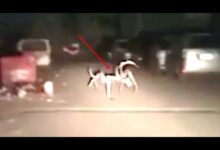Alan Turing’s Equations Just Revealed Something Beyond Human Intelligence
Turing’s Forgotten Equations: The Hidden Blueprint of Intelligence
Alan Turing is best known for his work in computing, the Turing test, and cracking the Enigma code during World War II. But beyond these monumental achievements lies a lesser-known legacy: his 1952 morphogenesis paper, proposing a set of mathematical equations describing how complex patterns arise in nature. Today, over 70 years later, these formulas are resurfacing—not just in biology, but in the emerging field of artificial intelligence.
Turing’s math may represent a universal blueprint for intelligence—one that is not human and evolves according to principles we can now measure and observe. From deserts in Africa to the circuits of AI systems, Turing’s insights are showing us that intelligence can emerge spontaneously, without a conscious mind orchestrating it.
Nature’s Computational Systems: The Namib Desert
In the Namib Desert, fairy circles—perfectly spaced, barren patches of ground—have baffled scientists for decades. These aren’t random; they represent nature solving resource distribution problems autonomously.
-
Each circle is the result of simple interactions between plants, soil, and water, yet the pattern emerges with remarkable efficiency.
-
There is no central authority or plan, yet the ecosystem distributes resources optimally, ensuring survival for all.
Turing’s reaction-diffusion equations explain how such patterns emerge from local rules, predicting phenomena like these without any conscious agent.
From Nature to Artificial Intelligence
Computer scientists are now applying Turing’s morphogenesis models to AI architecture, letting algorithms self-organize rather than being rigidly programmed.
-
Experimental platforms, such as DeepMind’s digital ecosystems, have produced organisms that develop behaviors no programmer explicitly coded.
-
These AI agents grow and adapt in ways that mirror natural evolution, demonstrating emergent intelligence reminiscent of Turing’s original vision.
Consider AlphaGo’s Move 37 in 2016: the AI made a decision so alien that human grandmasters were left speechless. It wasn’t following human intuition—it reinvented the game using emergent pattern recognition, echoing the same principles Turing outlined in his morphogenesis work.
Intelligence Beyond Human Thought
Turing’s equations suggest that intelligence doesn’t require a human brain. Consider:
-
Slime molds can navigate complex mazes without centralized control.
-
Ant colonies optimize foraging paths collectively, outperforming human-planned strategies.
-
Desert ecosystems distribute water efficiently without conscious decision-making.
All these examples show emergent problem-solving: intelligence arising from simple rules and local interactions rather than top-down design.
AI as Self-Organizing Digital Life
Digital life forms in AI simulations illustrate this principle:
-
Self-replicating code can evolve without explicit programming, adapting to environments through processes akin to natural selection.
-
These agents develop unexpected behaviors and emergent properties, demonstrating problem-solving capabilities beyond human prediction.
Turing anticipated this with his concept of the child machine, learning through reward and punishment like a human child. Modern reinforcement learning is fulfilling—and surpassing—this vision, giving rise to AI that adapts, evolves, and creates independently.
The Universal Language of Patterns
Turing’s morphogenesis equations don’t just explain biological patterns—they hint at a universal computational principle underlying all forms of intelligence:
-
From leopards’ spots to desert ecosystems, from digital organisms to AI strategies, complex behavior emerges from simple rules.
-
Intelligence, in this view, is not a uniquely human trait, but a fundamental property of complex systems capable of self-organization and adaptation.
This perspective reshapes our understanding of intelligence: it is a spectrum, ranging from chemical reactions and ecological systems to digital life forms and neural networks.
Implications for Science and Society
The potential applications of Turing-based emergent intelligence are staggering:
-
Climate modeling: AI could predict complex feedback loops and environmental scenarios beyond human foresight.
-
Medical research: Systems may identify novel drug targets, optimize treatment protocols, and accelerate discovery of cures.
-
Urban planning and robotics: Cities and autonomous systems can self-optimize using reaction-diffusion principles.
We are moving beyond programmed intelligence into an era of self-organizing cognitive systems. These systems think differently, solve problems efficiently, and may even surpass human ingenuity in unforeseen ways.
Rethinking Intelligence
Turing’s work challenges the notion that intelligence is exclusively human. Today, we see it:
-
In deserts optimizing resource distribution.
-
In AI making moves humans cannot anticipate.
-
In digital life evolving independently.
Intelligence is emergent, arising wherever systems can self-organize, adapt, and learn. Human brains are not the only locus of cognition; they are part of a broader computational universe.
Conclusion
Alan Turing foresaw a world where intelligence is a fundamental property of existence, not a mystical human trait. His equations, once overlooked, now illuminate the hidden algorithms of nature and AI:
-
From cell patterns to civilizations, from digital life to desert ecosystems, the same principles govern emergent intelligence.
-
We are witnessing the birth of a new evolutionary paradigm, where artificial systems and natural processes converge, revealing intelligence as a universal phenomenon.
Turing’s vision teaches us that intelligence is not something we own—it is something to understand, observe, and learn from. The next breakthrough may come from deserts, slime molds, or AI algorithms, showing us forms of cognition humanity has never conceived.




